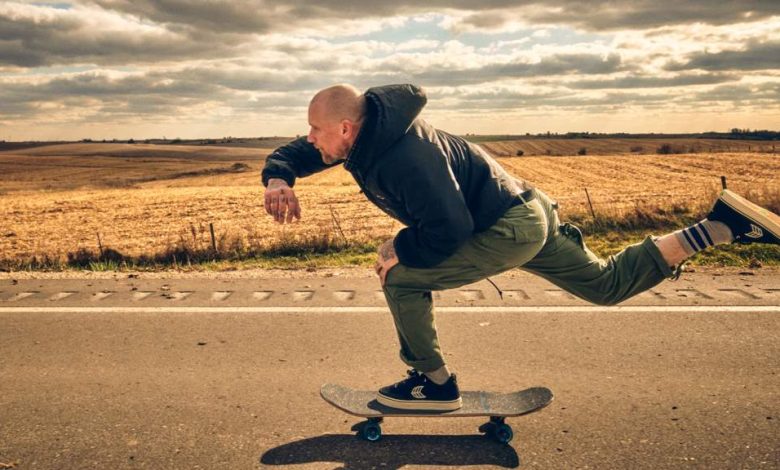Rolling Green: New York’s Journey to Sustainable Skateboarding

New York’s streets pulse with energy, where skateboards carve paths through urban jungles. Yet, this vibrant skateboarding culture is shifting toward sustainability, embracing green skateboards that prioritize the planet. From Brooklyn’s skateparks to Manhattan’s bustling avenues, eco-conscious skaters are choosing sustainable materials like bamboo and recycled wood. This movement reflects a broader push for environmental responsibility, blending style with purpose. According to the NYC Mayor’s Office of Sustainability, the city aims to cut emissions by 50% by mid-century, and green skateboards play a small but growing role. Join this storytelling journey to explore how New York’s skaters are rolling toward a greener future, one kickflip at a time.
The Roots of Skateboarding in New York
Skateboarding in New York began in the 1960s, inspired by California’s surf culture. Kids in the Bronx and Brooklyn grabbed boards to mimic surfers, gliding down asphalt waves. By the 1980s, the city’s gritty streets became a playground for skaters, with spots like Washington Square Park hosting legendary sessions. However, traditional skateboards, made from maple and polyurethane, left an environmental footprint. The manufacturing process often involved non-renewable resources, contributing to deforestation and emissions.
Today, the city’s skate culture is evolving. Skaters are rethinking their boards’ impact, driven by New York’s push for sustainability. According to a 2020 report by Sustainability Times, the skateboard industry is a leading contributor to maple deforestation. This awareness has sparked a shift, with local shops and skaters embracing eco-friendly alternatives, keeping the city’s rebellious spirit alive while going green.
Why Green Skateboards Matter
Green skateboards are more than a trend; they’re a response to environmental challenges. Traditional boards rely on Canadian maple, often harvested unsustainably, and polyurethane wheels, which emit harmful pollutants during production. In contrast, sustainable boards use bamboo, recycled wood, or reclaimed materials, reducing waste and carbon footprints. This shift aligns with New York’s sustainability goals, as outlined in the city’s PlaNYC, which emphasizes reducing emissions and waste.
Moreover, green skateboards appeal to eco-conscious younger generations. A 2023 Harvard Business Review study found that 65% of Millennials prefer sustainable brands, yet only 26% act on it. Skaters bridge this gap by choosing boards that reflect their values. By supporting eco-friendly brands, they contribute to cleaner streets and a healthier planet, proving small choices can spark big change.
A Personal Connection to the Shift
Growing up in Queens, the author watched friends shred at local skateparks, their boards snapping after months of tricks. Back then, nobody thought about where those broken decks went—straight to landfills. Years later, at a Brooklyn skate shop, the author discovered bamboo boards and recycled wheels. The shop owner shared how these materials cut waste and lasted longer. That moment clicked: skateboarding could be cool and kind to the planet.
This experience mirrors New York’s broader shift. Skaters, once indifferent to their environmental impact, now swap stories about sustainable brands at spots like LES Skatepark. It’s personal for many, as they see their city’s air and streets improve with collective action. This shift isn’t just about boards—it’s about owning the future of their culture.
Eco-Friendly Materials Redefining Skateboards
Sustainable skateboarding hinges on innovative materials. Bamboo, a fast-growing plant, is a game-changer. It’s durable, flexible, and has a lower environmental impact than maple. Companies like BambooSK8 craft boards that rival traditional ones in performance. Recycled wood decks, made from old boards or scraps, also gain traction, preventing landfill waste. Additionally, some brands repurpose old trucks into tools, like bottle openers, extending their lifecycle.
Wheels are evolving too. Polyurethane remains dominant, but brands like Satori recycle worn wheels into new ones, cutting emissions. According to Skateboards.com, bamboo decks and recycled materials can reduce a board’s carbon footprint by up to 30%. These innovations let skaters grind rails and ollie gaps without harming the planet, blending performance with purpose in New York’s skate scene.
New York’s Skate Shops Leading the Charge

Local skate shops are the heart of New York’s green movement. Stores like Uncle Funkys Boards in Manhattan and KCDC in Brooklyn stock eco-friendly brands, educating skaters about sustainable choices. These shops host events, like board recycling drives, where old decks are repurposed into art or furniture. They also partner with brands like Iris Skateboards, which reshape broken boards into fresh ones.
Moreover, shops foster community. At KCDC, skaters swap tips on maintaining boards to extend their life, reducing waste. This aligns with the city’s sustainability ethos, as seen in the NYC Mayor’s Office of Sustainability’s push for recycling. By championing green skateboards, these shops prove that local businesses can drive change, one skater at a time, while keeping New York’s streets vibrant.
Sustainable Practices for Skaters
Skaters can adopt practices to make their passion greener. Maintaining boards is key—oiling wheels, cleaning bearings, and re-gripping decks extend their lifespan. Instead of tossing broken boards, skaters can upcycle them into shelves or art, as suggested by Skateboards.com. Handing down old gear to younger skaters also cuts waste and inspires the next generation.
Additionally, choosing public transport or skating to spots reduces emissions. New York’s bike lanes and pedestrian paths make this easy. Skaters can also support brands with recycling programs, like Satori’s wheel initiative. These small steps, combined with eco-friendly boards, amplify impact. As skaters roll through Central Park or Flushing Meadows, they’re not just shredding—they’re shaping a sustainable future.
Challenges in the Shift to Green Skateboards
Despite progress, challenges remain. Eco-friendly boards often cost more, deterring budget-conscious skaters. Bamboo decks, for instance, can be 20% pricier than maple ones. Additionally, sustainable materials like recycled wood may not match traditional boards’ performance, frustrating pros who need precision. Awareness is another hurdle—many skaters still don’t know about green options.
However, brands are addressing these issues. Some offer affordable entry-level sustainable boards, while others improve recycled materials’ durability. Education is growing too, with shops and online platforms like Village Psychic spreading the word. New York’s skaters, known for their resilience, are tackling these challenges head-on, proving that sustainability doesn’t mean sacrificing style or skill.
The Role of Skateparks in Sustainability
Skateparks are more than concrete playgrounds—they’re hubs for green initiatives. New York’s parks, like McCarren in Brooklyn, host eco-focused events, such as cleanups and sustainability workshops. Some parks incorporate recycled materials into ramps or benches, reducing environmental impact. The city’s push for green spaces, noted in PlaNYC, supports these efforts, aiming for cleaner air and less waste.
Moreover, skateparks foster community action. Skaters organize to maintain parks, picking up litter and advocating for eco-friendly designs. These spaces inspire younger skaters to adopt sustainable habits, like recycling gear. By blending urban culture with environmental consciousness, New York’s skateparks are proving that sustainability can thrive where creativity and community meet, shaping a greener city. Discover Signs Your Skateboard Truck Hanger is Bent and Needs Replacing.
The Future of Green Skateboarding in New York
The future of green skateboarding in New York looks bright. As sustainability becomes mainstream, more brands will innovate, offering affordable, high-performing eco-friendly boards. Local shops will expand recycling programs, making it easier for skaters to trade in old gear. Technology, like non-toxic glues and plant-based resins, will further reduce environmental impact.
Additionally, New York’s youth will drive change. With 7 million skaters in the U.S., per Village Psychic, their collective voice can push brands and policymakers toward greener practices. Skateparks will evolve into eco-hubs, hosting solar-powered events or upcycling workshops. As the city aims for an 80% emissions cut by 2050, per the Mayor’s Office, green skateboards will roll New York closer to that goal.
Conclusion
New York’s skateboarding scene, once defined by gritty streets and maple decks, is embracing green skateboards with passion. From bamboo boards to recycled wheels, skaters are blending style with sustainability, aligning with the city’s eco-goals. Shops, parks, and communities are driving this shift, proving small actions—like upcycling a deck or choosing public transport—can make a difference. Despite challenges, the future is promising, with innovation and youth leading the way. Join this movement by exploring sustainable brands or sharing your eco-skating tips below. Let’s keep New York’s streets vibrant and green, one ride at a time. Share this story to inspire others!
FAQs
What are green skateboards made of?
Green skateboards use sustainable materials like bamboo, recycled wood, or repurposed decks. Wheels may be recycled polyurethane, reducing environmental impact.
Are green skateboards as durable as traditional ones?
Yes, materials like bamboo are durable and flexible, often matching maple’s performance, though some recycled wood decks may vary in strength.
Where can I find green skateboards in New York?
Shops like KCDC in Brooklyn or Uncle Funkys Boards in Manhattan stock eco-friendly brands and offer recycling programs for old gear.
How can skaters reduce their environmental impact?
Skaters can maintain boards, upcycle old decks, use public transport, and support brands with sustainable practices, like Satori or BambooSK8.
Why is sustainability important in skateboarding?
Sustainability reduces deforestation and emissions from board production, aligning with New York’s eco-goals and preserving the planet for future skaters.




